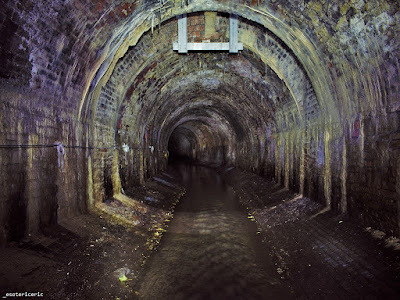History
The Malta Railway was the only railway line ever on the island of Malta, and it consisted of a single railway line from Valletta to Mdina. It was a single-track line in metre gauge, operating from 1883 to 1931. The railway was known locally in Maltese as il-vapur tal-art (the land ship).
The line connected Valletta and Mdina and a number of settlements in between. The first two stations, Valletta and Floriana, were underground. The Line extended over 11.1 km / 7 m, climbing 150 meters / 500 feet at a maximum of 25 Per mil. The line crossed roads by 18 level crossings of which 14 were staffed. The roads were chained off when a train was approaching. Originally the line was constructed with rails of 42 pounds per foot and replaced when the government took over the railway in 1890 by those of 60 pound per foot to allow heavier locomotives to run on the line.
Source:
https://en.wikipedia.org/wiki/Malta_Railway
Esoteric Eric
History
When the threat of nuclear war became imminent, the British Services in the Maltese Islands prepared a civil defence system aimed at ensuring a supply of food for the population of the Islands. These preparations took the form of a number of flour mills which were excavated in live rock and were self sufficient as regards the power required to run them.
The post-Second World War period was characterized for several decades with a continually brewing conflict known as the Cold War. This, together with the uncontrolled proliferation of nuclear warfare, led to a significant threat of a nuclear conflict in Europe. The Maltese islands had always been dependent on imported and stored food, particularly grain. To increase the storage of grain, the British Colonial Office took the decision to construct several underground flour mills in the Maltese islands, which would give the local population a staple diet of bread in case of need. Seven underground mills were constructed in Malta
The underground mills were excavated during 1954-55. They consisted of an entrance tunnel, some 30 meters long, 2.5 meters high and 3 meters wide, leading into a large chamber. This chamber was divided into three floors and housed the storage, grinding and milling equipment. A grain silo with a storage capacity of about 1000 tons of weath was situated at the rear of the mill. This was connected to the milling machinery by mechanical augers. The silo had access from the surface. The mill was supplied and installed by the British Company Thomas Robinson of Rochdale, England. It was powered by an 80 hp diesel engine and an alternator supplied the electrical power.
These flour mills were each composed of a pair of large silos where the grain was stored, archimedian screws which transported the grain to the milling machines, and the machines proper. The milling machine ran was started by first firing up a starting engine which would then fire up the engine proper of the milling machine. The machine functioned through a series of leather belts which provided traction for all the moving parts. Of particular note is the fact that the milled grain was segregated into its different components by the machine itself and the miller's work mainly consisted of ensuring the bags of milled grain did not overflow.
The mills were all underground and were spread around the Maltese Islands in areas that were at the time mainly arable. Some of the locations have now been developed, but most of the mills are still located in areas that are predominantly rural
The Buskett (Siggiewi) mill is particular since it is composed of two mills in one. This means that the ramp leading underground forks into two paths, each of which leads to a complete and separate mill.
Source:
https://www.28dayslater.co.uk/ww2-underground-flour-mill-siggiewi-malta-sept15.t99624
Esoteric Eric
History
Fort Tigné is a polygonal fort in Tigné Point, Sliema, Malta. It was built by the Order of Saint John between 1793 and 1795 to protect the entrance to Marsamxett Harbour, and it is one of the oldest polygonal forts in the world. The fort was extensively altered by the British in the 19th century, and it remained in use by the military until 1979.
Fort Tigné was restored in the early 21st century, and it is now in good condition. It has been on Malta's tentative list of UNESCO World Heritage Sites since 1998, as part of the Knights' Fortifications around the Harbours of Malta.
Source:
https://en.wikipedia.org/wiki/Fort_Tign%C3%A9
Esoteric Eric
History
Part of the vast network of culverts and sewers under Bradford, including the underground arches of the city's cathedral.
Esoteric Eric




























